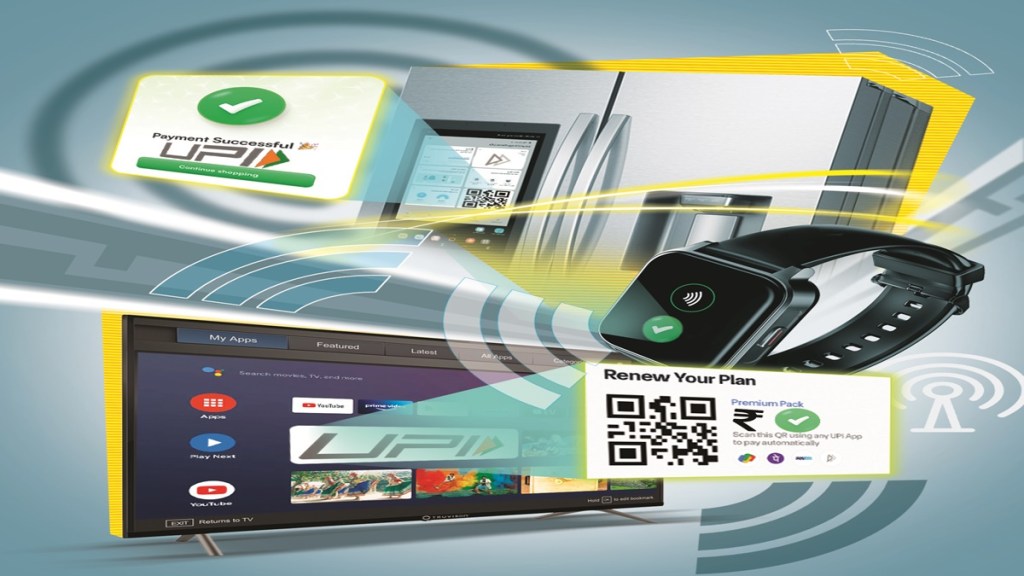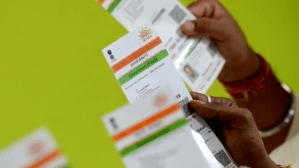Still making payments by cash, card or UPI? It’s about to get easier — to the point where any smart device is going to be able to initiate automated payments without user interference. The National Payments Corporation of India is in the process of developing UPI 3.0, an IoT (Internet of Things)-ready UPI system, which will allow individuals to automate UPI transactions through all smart devices and not just their phones.
How IoT-Enabled UPI Will Work
The IoT is a globally employed connection and data exchange tech, which enables connectivity and sharing between objects embedded with softwares or sensors connecting them to the internet. This would mean that UPI payments can be made without human intervention, through smart devices like TVs, fridges, washing machines, cars, smart watches, etc. without the user’s or their mobile phone’s involvement.
This system will be built on the capacities of UPI Autopay and UPI Circle, which allows users to automate payments, and for family finance and other such requirements, to allow access and transitions permissions to other users from their account, within certain set limits. With the IoT-driven
UPI for example, televisions once set up with the original UPI id will be able to initiate monthly subscription payments without user interference.
It has been speculated that the official announcement for this system upgrade will be made at the Global Fintech Fest of 2025 pending regulatory approvals, scheduled to be held in October in Mumbai. The news was first published in a national business newspaper, quoting two anonymous sources from the NCPI, and was consequently picked up by other news platforms as well. The description of how this UPI update will work, has been described by as follows — users can issue a mandate to a smart device from the main UPI device, which will lead to the creation of a secondary UPI id linked to the user’s main account — much like a bluetooth enabled device has its own name and IP address. Transactions will be automated within set limits yet to be announced, and the changes to mandates will have to be made from the main or primary UPI address.
Persons close to the matter have said that this new upgrade to the device will not be much different from giving a payment command to a human — the only nuance will be that the different devices will have separate IDs, which is what the new feature must account for. Recent news reports indicate that the NCPI is in the process of developing the UPI system to make it IoT (Internet of Things) enabled. This will, among other things, allow individuals to make automated UPI payments through any smart device, and not just through smart phones. In the financial year 2024-25, UPI processed 185.8 billion transactions — a staggering 41.7% jump from the previous year. According to the RBI’s report, last year 83% of India’s retail payments were made through UPI. In 2015, after the Government of India first formulated their draft policy on IoT, the SmartCity projects across the country followed. Several IoT-based developments have taken place since, including the Digital India Program launch as well. UPI becoming IoT-enabled is the latest thing in a long line of tech upgrades that have taken place, and are yet to come, in India.
Opportunities and Challenges Ahead
All of this goes to show a potentially smooth launch of the new UPI upgrade in India. As far as public acceptance is concerned — the adoption of UPI Autopay by users, driven largely by convenient subscription packages by streaming platforms in addition to the monthly deductions of bills, the IoT-enabled payments upgrade points to a favourable outcome.
While a significant tech upgrade for sure, concerns of regulatory complications and hurdles have been expressed online. Although the most natural next step in payment technologies, this kind of payment technology will also give rise to the number of stakeholders involved who will have to comply with these regulations. It emerges that with technology such as this, it is imperative to have robust machinery to avoid unauthorised transactions, and to ensure that data security and privacy requirements are complied with.
IoT systems are already in use for large scale operations and projects even besides Digital India initiative, the Smart Cities missions — the technology is being used in the agriculture, healthcare, information, finance, retail, manufacturing and energy networks as well.
In an analysis of the autonomous payments market size projection for 2024-2032, done by Global Market Insights, the report stated, “Rising consumer demand for convenience is a key driver in the evolution of the market. As consumers increasingly expect instant, seamless experiences in their daily lives, their expectations for payment processes have shifted significantly.” The analysis found that after the global market size was valued at $37 billion, the estimated CAGR between 2024 and 2032 was estimated to be over 40%. Additionally, a report published by MarketsandMarkets in 2024 stated that the global wearable payment devices market is projected to reach $82 billion by 2026 growing at a CAGR of 13.6% for the forecast period.
Payments via UPI are becoming easier by the day, with the UPI 2.0 having brought in UP International for transactions with international companies, the availability of UPI credit line and overdraft account linking, as well as delegated payments.








